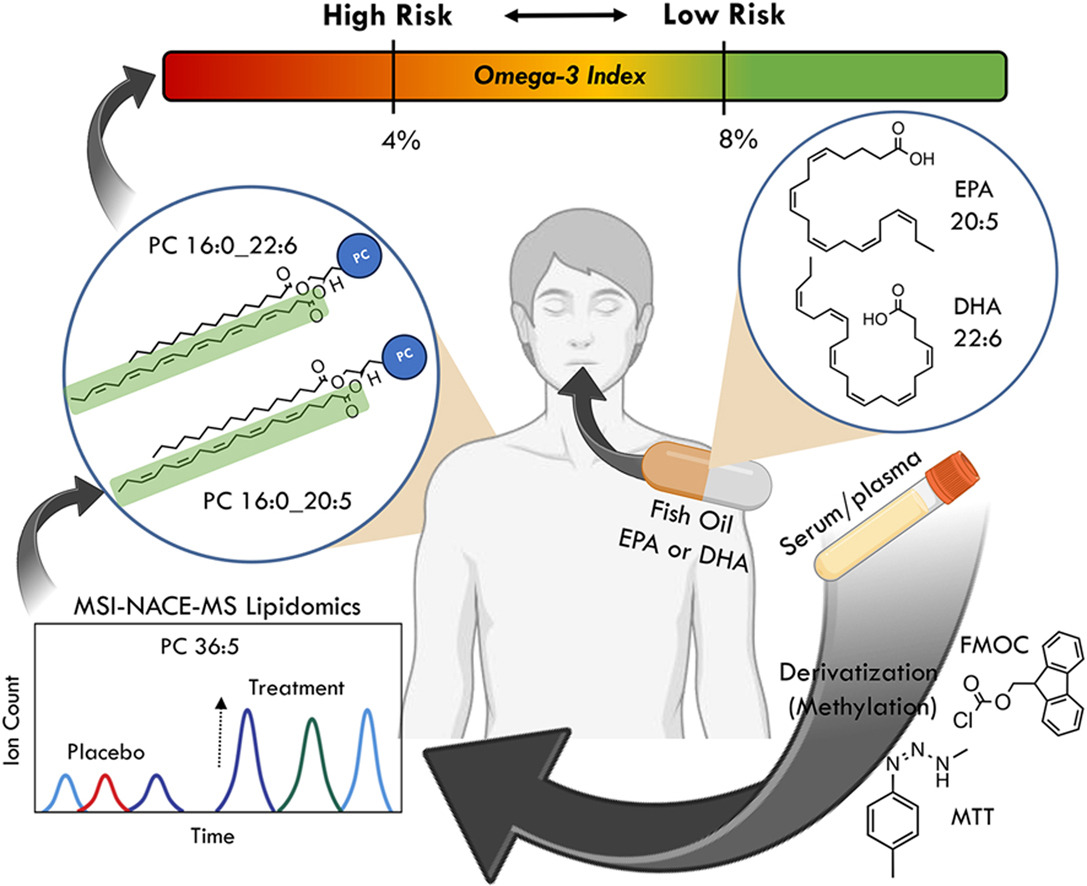Lipidomic studies reveal two specific circulating phosphatidylcholines as surrogate biomarkers of the omega-3 index
-
DHA and EPA ( are part of the phosphatidylcholine in the image below, I am wondering if this is a safer delivery method for these omega 3's.
Abstract
Optimal dietary intake of omega-3 long-chain polyunsaturated fatty acids (n3-LCPUFAs) is critical to human health across the lifespan. However, omega-3 index (O3I) determination is not routinely assessed due to complicated procedures for n3-LCPUFA analysis from the phospholipid (PL) fraction of erythrocytes. Herein, a high-throughput method for lipidomics based on multisegment injection-nonaqueous capillary electrophoresis-mass spectrometry was applied to identify circulating PLs as surrogate biomarkers of O3I in two randomized placebo-controlled trials. An untargeted lipidomic data workflow using a subgroup analysis of serum extracts from sunflower oil versus high-dose fish oil (FO)-supplemented participants revealed that ingested n3-LCPUFAs were primarily distributed as their phosphatidylcholines (PCs) relative to other PL classes. In both high-dose FO (5.0 g/day) and EPA-only trials (3.0 g/day), PC (16:0_20:5) was the most responsive PL, whereas PC (16:0_22:6) was selective to DHA-only supplementation. We also demonstrated that the sum concentration of both these PCs in fasting serum or plasma samples was positively correlated to the O3I following FO (r = 0.708, P = 1.02 × 10−11, n = 69) and EPA- or DHA-only supplementation (r = 0.768, P = 1.01 × 10−33, n = 167). Overall, DHA was more effective in improving the O3I (ΔO3I = 4.90 ± 1.33%) compared to EPA (ΔO3I = 2.99 ± 1.19%) in young Canadian adults who had a poor nutritional status with an O3I (3.50 ± 0.68%) at baseline. Our method enables the rapid assessment of the O3I by directly measuring two circulating PC species in small volumes of blood, which may facilitate screening applications for population and precision health.
